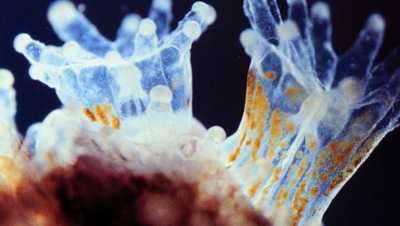%20-%20Wallpapers4Desktop.com%20020.jpg)
Is this what comes to mind? (Photo credit:http://www.wallpapers4desktop.com)
(Note: The corals mentioned here are hard corals. For more information on the basic types of corals, please head over to Basic Types of Corals.)
When coral reefs are mentioned, in many peoples’ minds, they conjure up images of vividly coloured underwater structures of different shapes, with beautiful fishes hiding amidst them, clear blue water that stretches out on end, and a pleasant warm climate suitable for a glorious beach vacation. They are right!
But did you know that these lovely unique structures are actually a community of living things? Coral reefs are one of the most diverse ecosystems in the worlds, thus earning them the name “Rainforests of the oceans”.
Now, imagine the country France. If we combine all the coral reefs in the world, they occupy an area that is half the land size of France. These reefs take up less than 0.1% of Earth’s ocean surface! Yet they are home to as many as 25% of the world’s marine species! This sheer amount of biodiversity thus earns it its name as the “rainforests of the oceans”.
So, what are coral reefs? Are they plants?
Nope! Corals are actually invertebrate animals, and each coral is known as a polyp. Most polyps live in “communities” or colonies- groups of genetically identical polyps. The polyps will secrete a hard exoskeleton made of calcium carbonate, which forms as the base for the colonies. The living polyps will then continuously secrete the hard calcium carbonate at the base, which will add to the size of the entire structure and so that the living colony is at the top of the structure above the remains of former colonies.
When we think of animals, we think of movement associated with the animals. Dogs run, cats stalk, fishes swim. So what about these tough corals? Amazingly, these reef-building animals are grounded in their homeland. That is, they stay fixed in one place and are not mobile. We call such animals sessile.
But then, the question arises: If they cannot move, how do they eat? Thanks to their tentacles, the corals reach out with these to catch prey. Also, their relationship with a specific kind of algae helps them to feed as well, as explained below.
Where can we find these lovely creatures in all its colourful glory?
Well, there are some corals that can be found even in the freezing waters of the Arctic. But corals that build corals reefs are only found between 30 degrees north and south of the equator, and usually in shallow water where light can penetrate through, and in tropical temperatures. Why, you may ask. This is due to the symbiosis (mutual beneficial relationship) between a kind of microscopic algae known as zooxanthellae and reef dwelling corals.

Zooxanthellae found in a coral polyp. (Photo credit:http://serc.carleton.edu/eslabs/corals/2b.html)
The algae lives in the coral polyps’ exoskeleton and this gives the corals their brilliant colours we often see in photos as most coral polyps have clear bodies. The algae will photosynthesize, and the food and oxygen shared with the corals. The algae also convert the coral’s waste matter into sugar- food for the coral. In exchange, the corals offer the algae protection as well as access to light. Because of the algae’s dependence on light to make food, reef-building corals will live in depths (less than 100 feet) that allow adequate sunlight to penetrate through.